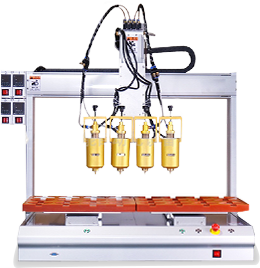

The sheet metal stamping process is an extremely influential processing technology in the field of industrial manufacturing. It uses sheet metal (such as carbon steel, stainless steel, aluminum alloy, etc.) as raw materials, relies on the strong pressure of the press, and cooperates with precisely designed molds. Through a series of processes such as blanking, punching, bending, stretching, and forming, the sheet metal is quickly transformed into various high-precision, standardized industrial parts. From body panels in automobile manufacturing, to precision housings of electronic equipment, to structural support parts of mechanical equipment, the sheet metal stamping process runs through many industries. With its high efficiency, precision, and mass production characteristics, it provides basic and key parts processing solutions for modern industry, and promotes the development of products towards lightweight and high performance.
(II) Performance
Features Dimensions | Specific indicators | Application value |
Dimensional accuracy | Tolerance ±0.05mm (precision parts) | Ensure product assembly accuracy and adapt to high-end equipment |
Production efficiency | Single equipment ≥30 times/minute (conventional parts) | Meet large-scale order delivery, reduce costs and increase efficiency |
Material utilization | Complex parts ≥80% | Save metal raw materials and improve economic benefits |
Mechanical properties | Strength increased by 10% - 30% after stamping | Enhance product durability and adapt to harsh working conditions |
After stamping, the parts will be hardened by cold work due to the plastic deformation of the metal, and the mechanical properties (such as strength and hardness) can be improved by 10% - 30%, which will enhance the durability of the product under complex working conditions.
III. Product Details
(I) Process Links
The metal sheet stamping process includes several key processes:
1. Mold design and manufacturing: According to product requirements, the mold is designed using CAD/CAM technology, including punches, concave molds, unloading devices, etc., and the mold accuracy and service life are ensured through CNC machining, EDM forming, heat treatment and other processes.
2. Sheet pretreatment: The metal sheet is flattened, leveled, degreased, and rusted to ensure the flatness and cleanliness of the sheet, providing high-quality raw materials for stamping.
3. Stamping forming: On the press, the sheet is gradually processed into the target shape through processes such as blanking (obtaining part blanks), punching (processing holes), bending (shaping angles), and stretching (forming curved surfaces/deep cavities). During the process, the pressure and displacement are monitored in real time with the help of sensors to ensure the forming quality.
4. Post-processing: Deburring, grinding, and surface treatment (such as galvanizing, painting, and anodizing) of stamped parts to improve appearance, corrosion resistance, and wear resistance.
(II) Applicable materials
Covering a variety of metal sheets:
Carbon steel: such as Q235 and Q345, with moderate strength and low cost, widely used in stamping structural parts such as automobile chassis and mechanical brackets.
Stainless steel: 304, 316, etc., corrosion-resistant and easy to clean, suitable for food machinery, medical equipment, and outdoor hardware.
Aluminum alloy: 6061, 5052, light weight and good thermal conductivity, often used in electronic equipment housings and aerospace parts stamping.
(III) Application areas
Metal sheet stamping technology deeply penetrates multiple industries:
Automobile manufacturing: production of body panels (doors, hoods), chassis parts (brackets, beams), to help lighten the car and strengthen its structure.
Electronic appliances: processing mobile phone middle frames, computer cases, and home appliance housings to achieve precise and beautiful product design.
Mechanical equipment: manufacturing gearbox housing, hydraulic valve plate, and conveying equipment accessories to ensure the stability of equipment structure and the realization of functions.
Building hardware: producing door and window hinges, curtain wall hangings, and decorative moldings to meet the needs of building decoration and functions, becoming an indispensable basic process in the modern industrial manufacturing system.
 Headquarters tel.
Headquarters tel. E-mail.
E-mail.